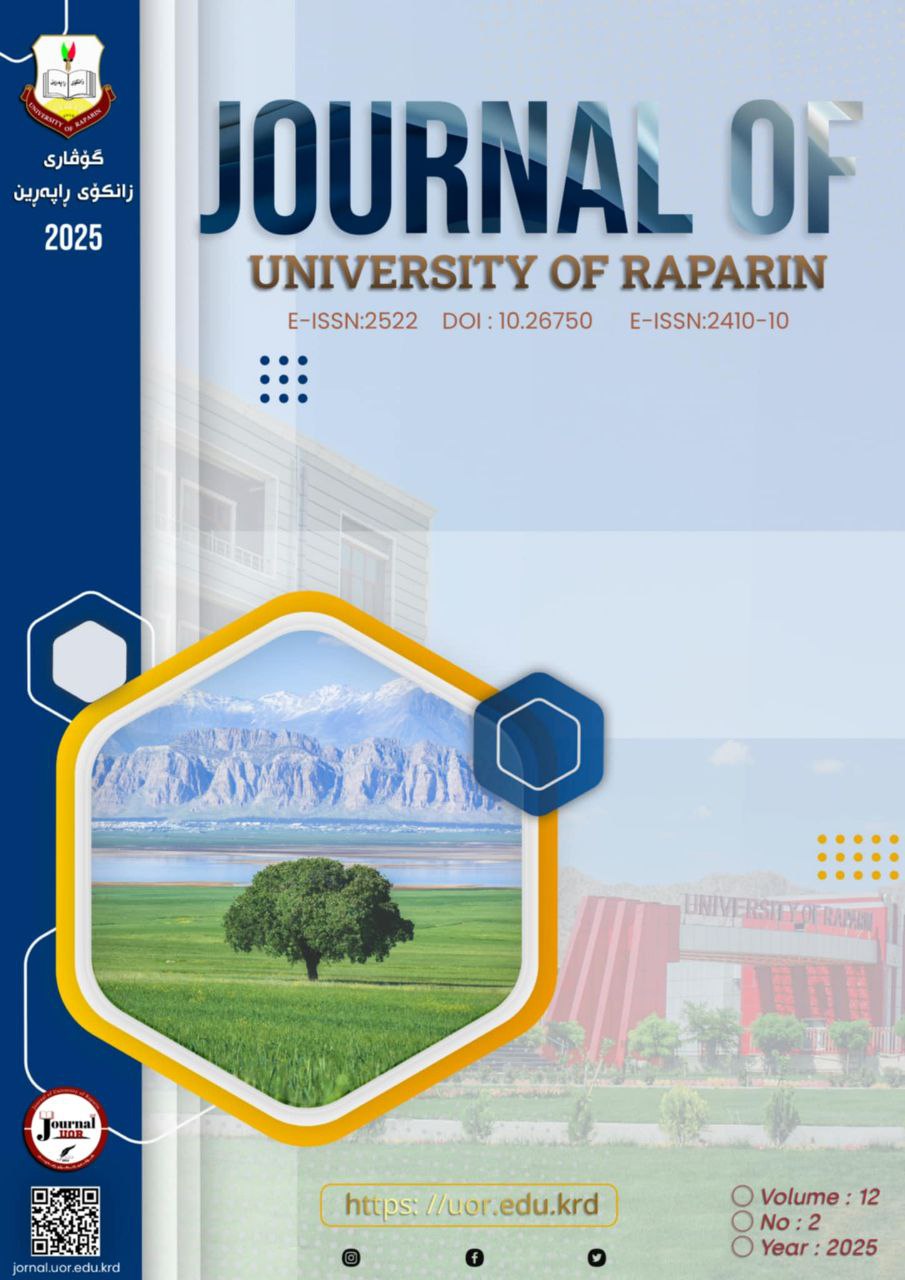Abstract
This paper deals with the subject of swearing in American movies through stylistic and linguistic analysis models in two movies: one from the action genre and the other one from the romance genre. The paper studies key questions in relation to whether the genre, theme, and tenor of a movie have the influence of the frequency, types, and functions of English swearing expressions. In addition to that, the study examines the impact of gender type on the use of swearing within the texts used in these movies. This was based on the hypothesis that differences in swearing frequency, types, and functions arise due to both the genre of the movies and the gender of the characters in the movies. To address these questions, the researcher has developed a theoretical framework for swearing in English language. Two movies were selected with an adopted model, and the statistical tools were used to calculate the frequency and percentage of swearing expressions in the analyzed texts. The findings of the study reveal that the frequency, types, and functions of English swearing are significantly influenced by the movie's genre and tenor, as well as by the gender of the characters. These results form the basis for a set of conclusions drawn at the end of the study for further studies.
References
Anderson, L. and Trudgill, P. (1992) Bad language. London: Penguin.
Andersson, L.G. (1977) ‘Varfor ardet fult att svare?’ Univ.of Umea, Dept, of linguistics, publ.16
Andersson, L.G (1985) Full spraks Svordomar, dialecter och annat ont stockkolm:carlssons.
Andersson, L.G. & Hirsch, Richard (1985) “A Project on Swearing: A Comparison betweenAmerican English and Swedish” In Swearing, Report no. 1. Göteborg: Dept. of Linguistics at the University of Göteborg.
Bailey, L.A. and Timm, L.A. (1976) ‘More on women’s—and men’s expletives’, Anthropological Linguistics, 18(9): 438–449.
Beers Fägersten, K., & Stapleton, K. (2021). Swearing and the Social: The Intersection of Sociolinguistics and Swearing. In The Cambridge Handbook of Sociolinguistics (pp. 318-335). Cambridge University Press.
Crawford , M.1995. Talking differences on Gender and language. London: SAGE Publications.
Cressman, L. Dale, Callister,M. ,Robinson,T. and Near, Ch (2009) swearing in the Cinma'' An analysis for profanity in US teen-oriented movies 1980-2006. Journal of children & Media, Rptledge.USA.
Crystal ,D. (1997) The Cambridge Encyclopedia of language 2nd ed .Cambridge , Cambridge University Press
Crystal ,D. (1992) The Cambridge Encyclopedia of language 2nd ed . Cambridge , Cambridge University Press
Crystal ,D. (1987) The Cambridge Encyclopedia of language 2nd ed . Cambridge , Cambridge University Press
Douma, J (1989) 'The Ten Commandments' 'Presbyterian and Reformed IN Thomas, 1998. James 512. Htm.
Eric Pement. (1998) Seven reason for swearing. Cornerstone Vol.27, Issue 115, pp:41-44.
Glover, M. B. (2008) Teen swearing is on the rise, experts say. Salt .Lake Tribune,AB.
Green, Mitchell. (2004) ' Illocutionary force and semantic content'. Linguistics and philosophy 23(5 ) :355-473.
Hughes, Geoffrey (1991) Swearing. A Social history of Foul Language, Oaths and Profanity in English. Oxford: Blackwell.
Hussein, A. A. (2009) A Sociolinguistic study of oaths produce by interlocutor in Jordon. An unpublished MA dissertation, Philadephia university. Jordon.
Jay, Timothy (2000) Why we curse. A Neuro-psycho-social theory of speech. Philadelphia& Amsterdam: John Benjamin.
Kaya, B. K, and Saposlky,B.S (2004) Talking a 'blue' streak: Context and offensive language in prime network television programs. Journalism and Mass Communication Quarterly, 81(4), 911-927.
Liedlich , R. D. (1973) Coming to term with language: an anthology. New York : John Wiley & Sona, Inc.
Ljung, Magnus (1984) ''Swearing'' In studier i modern sprakvetenskap. Vol.7.University of Stockholm.
McEnery, T. (2006) Swearing in English: Bad language, purity, and power from 1586 to the present. Rutledge.
Merriam-Webster Dictionary. (2023). Swear. Retrieved from https://www.merriam-webster.com
Montagu, Ashley (1967) The Anatomy of Swearing. New York: Macmillan.
OED, (2023) The Oxford English Dictionary 2nd ed. Oxford: Clarendon Press.
Sagarin , E.(1962) The anatomy of dirty words. New York: Lyle Stuart.
Stapleton, K., et al. (2022). The Pragmatics of Swearing: Emotionality and Taboo in Context. Pragmatics and Society, 13(4), 452-468.
Taylor, Brian A. (1975) Towards a structural and lexical analysis of swearing and language abuse in Australian English. Linguistics 164:17-43.
Taylor, Brian A. (1976) Towards a sociolinguistic analysis of 'swearing' and the language of abuse in Australian English. In: Clyne 1976:43-62.
Van Lancker DV, Cummings JL. (1999) Expletive:Neurolinguitic and Neurobehavioral perspectives on swearing. Brain Research Reviews, 31(1): 83-104.
Verschuren, Jeff. (1985) What People Say They Do With Words. Norwood, N.J.: Ablex (Advances in Discourse Processes 14).
Wierzbicka, Anna. (1991) Cross-cultural Pragmatics: The Semantics Of Human Interaction. Berlin: Mouton de Gruyter.

This work is licensed under a Creative Commons Attribution-NonCommercial-NoDerivatives 4.0 International License.
Copyright (c) 2025 Journal of University of Raparin

